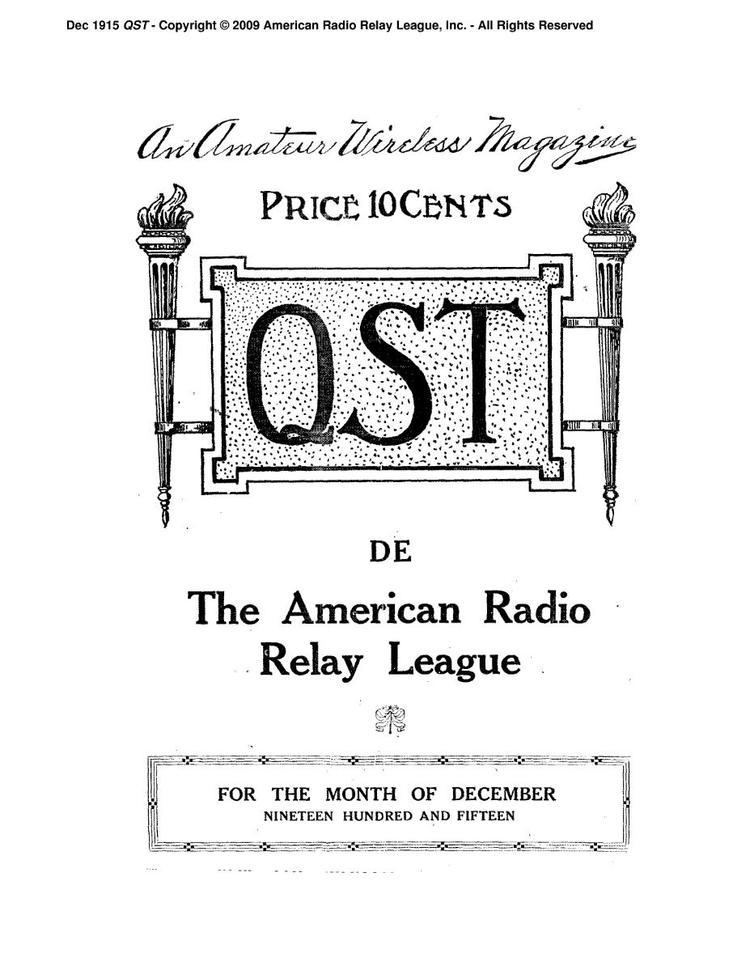Editor Steven Ford, WB8IMY Frequency Monthly First issue December 1915 | Circulation > 150,000 | |
 | ||
Publisher | ||
QST (OCLC 1623841) is a magazine for amateur radio enthusiasts, published by the American Radio Relay League (ARRL). It is a membership journal that is included with membership in the ARRL. The publisher claims that circulation of QST in the United States is higher than all other amateur radio-related publications in the United States combined. Although an exact number for circulation is not published by the American Radio Relay League, the organization claimed 154,627 members at the end of 2008, almost all of whom receive the magazine monthly, in addition to issues delivered to libraries and newsstands.
Contents
The magazine name is derived from the radio Q signal meaning "calling all stations", and its first issue was dated December 1915. QST suspended publication after September 1917 due to World War One, but has been continuously published since its resumption in May 1919. Supplemental content to the magazine is available on the ARRL web site, including a complete archive in PDF format, available to ARRL members starting in 2008.
Content
QST includes projects for the amateur radio enthusiast, pictures, articles, columns, and reports on ARRL affairs. Particular interest is given to amateur radio's role in emergency communications such as in the hours after the September 11 attacks and in Hurricane Katrina.
History
The magazine was first published in December 1915, with its first three issues financed by American Radio Relay League founder Hiram Percy Maxim and secretary Clarence D. Tuska, with an expectation that increased membership would finance its continued existence. In October 1916, the editors announced the formation of The QST Publishing Company, mostly to insulate Maxim and Tuska from possible litigation risks.
Publication of QST was temporarily suspended after the September 1917 issue. In April 1917, the United States government, following its entrance into World War I, banned all amateur radio activities, and a large percentage of the magazine's subscribers had entered military service. The ban on amateur radio was lifted after the conclusion of the war. QST returned in May 1919 with no cover – billed as “ARRL Special Bulletin” – and only 8 pages long. At a meeting in New York on March 29, a group that included Maxim, Tuska, and nine others decided to finance its return in this form and make a plea for membership and subscription renewals. The June 1919 issue, still without a cover, announced that the war time ban on receiving had been lifted. Finally, in July 1919, QST resumed its previous format, although amateurs would not be permitted back on the air until that fall, when a supplement to the October issue proclaimed “BAN OFF”. By September 1920, QST was back up to 100 pages, a size not seen since April 1917.
Publication continued throughout World War II, despite amateur radio's hiatus by order of the U.S. government. During both wars, amateurs were in high demand as military radio operators, and QST's staff pitched in for the war effort.
As part of its centennial celebration in 2014, ARRL published two volumes of QST reprints from 1915-2013: one on Amateur Radio technology and the other on advertising.
